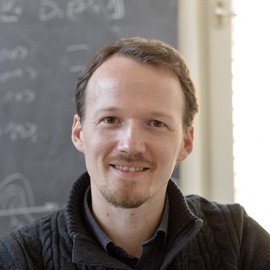 Electrodynamics on the lattice. Figure adapted from published article.
Electrodynamics on the lattice. Figure adapted from published article.
Abstract
Gauge theories form the theoretical foundation of our understanding of many fields of science, in particular elementary particle physics and nuclear physics. They are, however, extremely difficult to treat with conventional methods such as analytical approaches or numerical calculations on classical computers. One central aim of NeQST is to use the multilevel structure of qdits in order to tackle gauge theories on cutting-edge quantum computers. The hope is to obtain important insights into important effects. These include the astonishingly fast equilibration of quark-gluon matter observed in heavy-ion collisions such as performed at CERN, or the Schwinger effect, which predicts the production of massive particles (electrons and positrons) out of the vacuum only by applying an extreme electric field. The following popular-science article, written by Philipp Hauke, Trento, together with Robert Ott, postdoctoral researcher at Innsbruck, explains in an accessible way the concept of quantum simulation in general, the gauge symmetry and Gauß’ law that underly gauge theories, how electrons, positrons, and electric fields can be simulated in a quantum device, and they treat the equilibration dynamics of gauge theories and the Schwinger effect. The article is written in German and can be found open access under this link: https://onlinelibrary.wiley.com/doi/full/10.1002/piuz.202301683
Published 1 September 2023
